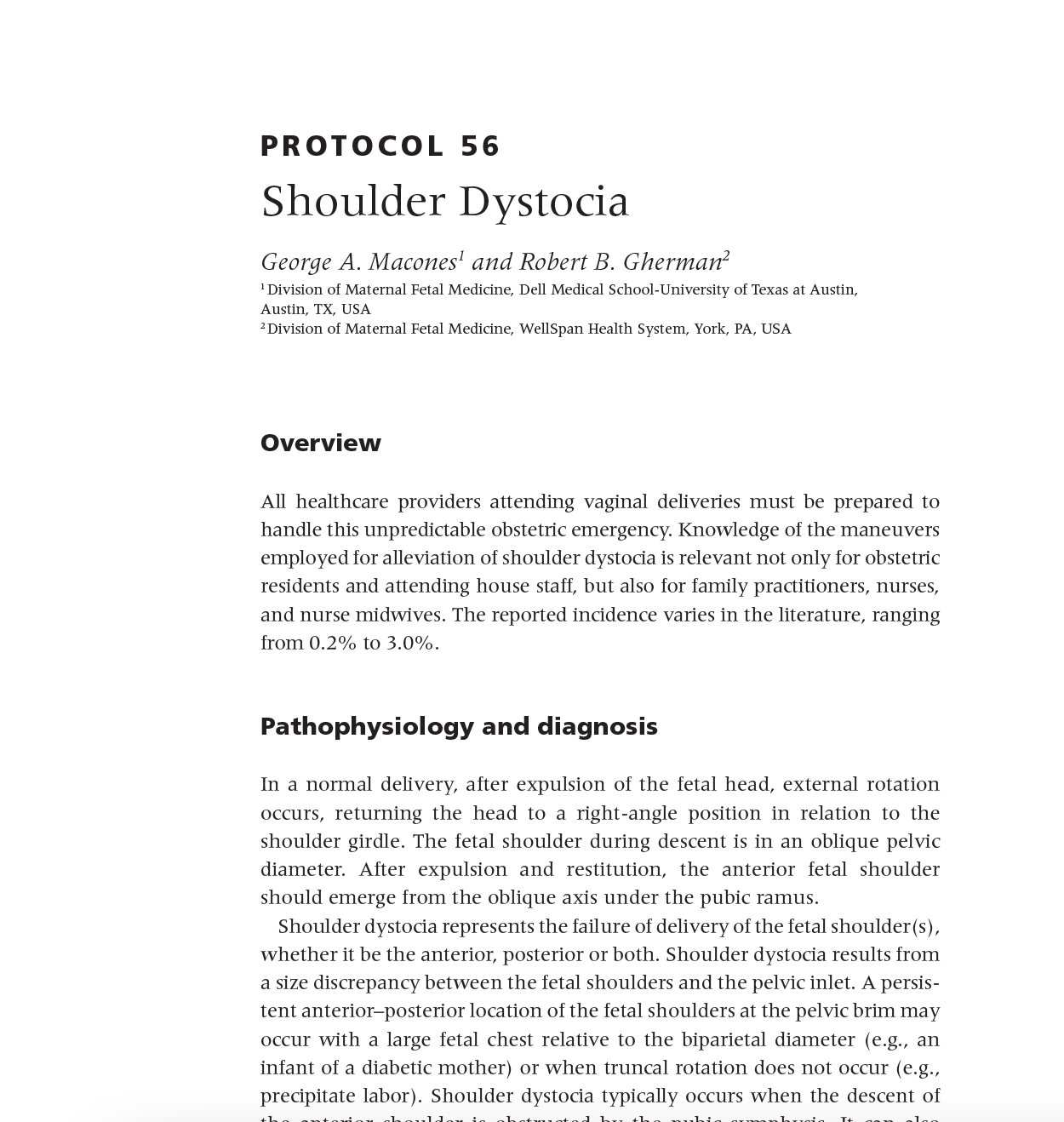Protocols for High-Risk Pregnancies, 7th Edition: Protocol 56 - Shoulder Dystocia
All healthcare providers attending vaginal deliveries must be prepared to handle this unpredictable obstetric emergency. Knowledge of the maneuvers employed for alleviation of shoulder dystocia is relevant not only for obstetric residents and attending house staff, but also for family practitioners, nurses, and nurse midwives. The reported incidence varies in the literature, ranging from 0.2% to 3.0%.
Overview
All healthcare providers attending vaginal deliveries must be prepared to handle this unpredictable obstetric emergency. Knowledge of the maneuvers employed for alleviation of shoulder dystocia is relevant not only for obstetric residents and attending house staff, but also for family practitioners, nurses, and nurse midwives. The reported incidence varies in the literature, ranging from 0.2% to 3.0%.
For an in-depth review, read a chapter summary here.
Read the full chapter via PDF below:

S4E1: New RNA platform can predict pregnancy complications
February 11th 2022In this episode of Pap Talk, Contemporary OB/GYN® sat down with Maneesh Jain, CEO of Mirvie, and Michal Elovitz, MD, chief medical advisor at Mirvie, a new RNA platform that is able to predict pregnancy complications by revealing the biology of each pregnancy. They discussed recently published data regarding the platform's ability to predict preeclampsia and preterm birth.
Listen

